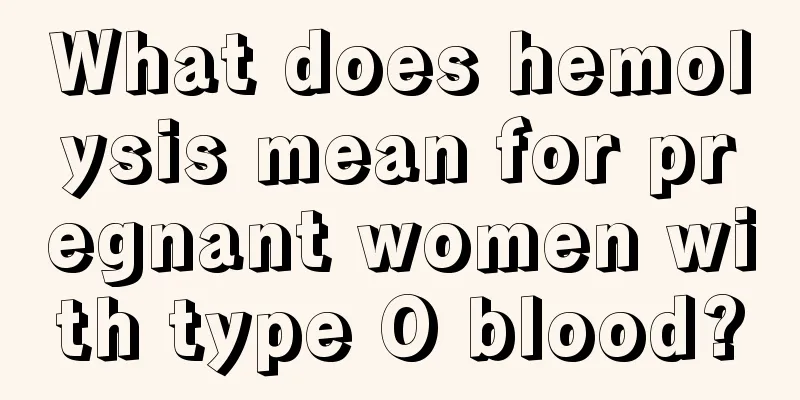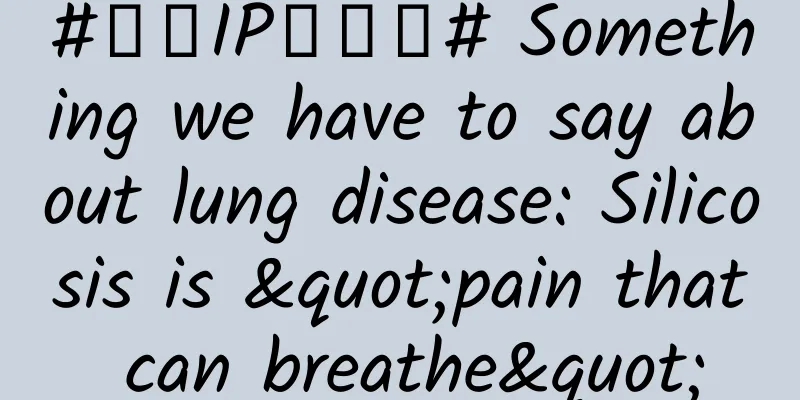What does hemolysis mean for pregnant women with type O blood?

|
Pregnant women may experience hemolysis due to blood type during pregnancy. The blood type that is more prone to hemolysis is type O blood. Many pregnant women with type O blood will develop hemolysis, so women with type O blood must be very alert to the occurrence of hemolysis when they are pregnant. So what does it mean if a pregnant woman has type O blood hemolysis? What does hemolysis in pregnant women with type O blood mean? Hemolytic disease in pregnant women with type O blood is a hemolytic reaction that occurs when the mother's blood is type O and the child is type A or type B. The mother's body contains anti-A or anti-B antigens, which enter the fetus's body and destroy the fetus's blood cells, causing hemolysis. When the fetus inherits the father's blood type gene, and the mother lacks this antigen, if the mother's immune antibodies enter the fetus's blood circulation and combine with the blood type antigens on the child's red blood cells, it will cause hemolytic anemia and jaundice in the child. However, it is not necessarily the case that the blood types of mother and daughter are inconsistent that will cause hemolysis. The prevalence of hemolysis in pregnant women with type O blood is 2~2.5%. The main manifestation of neonatal hemolysis is jaundice within one or two days after birth and it worsens rapidly. Hemolytic disease in pregnant women with type O blood and newborn babies 1. Jaundice is a clinical symptom of ABO hemolytic disease. Most cases occur 2 to 3 days after birth, and about 1/4 of babies develop jaundice within the first day after birth. Similarly, about one-quarter of patients developed moderate to severe jaundice (referring to total blood bilirubin above 342 mol/L (2b250 g/dL)). 2. Anemia. Patients with ABO hemolytic disease all have varying degrees of anemia, but the degree is generally mild. Severe anemia (hemoglobin concentration below 100g/L) accounts for only about 5%. In some mild cases of ABO hemolytic disease, the early symptoms may not be severe, but terminal anemia may occur 2 to 6 weeks after birth, or anemia may become very severe in the "physiological anemia" stage 8 to 12 weeks after birth. This is due to the continued presence of antigens, resulting in diffuse hemolysis. Blood antigens can reduce the life span of red blood cells. It is reported that the lifespan of blood cells in such children is only about 35 days, and the daily hemoglobin concentration drops by about 4 times that of normal children of the same period. Blood cell destruction increases, and the bone marrow hematopoietic function is physiologically low at this time and cannot be effectively replenished, eventually leading to neonatal late stage anemia. The article explains in detail what hemolysis in pregnant women with type O blood means, and also introduces in detail the symptoms of hemolysis in newborns of pregnant women with type O blood. As a woman with type O blood, if you are pregnant, it is best to take effective measures to check whether type O blood hemolysis has occurred, so that you can take better measures to prevent the occurrence of neonatal hemolytic disease. |
<<: Abnormal menstrual blood pictures
>>: The effect of Anqitan on the cervix
Recommend
Tips for midnight dysmenorrhea and insomnia
Dysmenorrhea is a problem that many women with co...
Do you have pelvic tuberculosis infection?
The occurrence of pelvic tuberculosis is generall...
What is the cause of brown blood during ovulation?
The ovulation period is a condition that occurs b...
How to wear underwear to enlarge breasts?
There are a large number of women with small brea...
How can women quit smoking effectively?
It is very easy to smoke a small cigarette, but i...
No more bleeding after 39 weeks of pregnancy
Bloody show is one of the clinical signs. Within ...
There is a pimple on the vulva
Acne on the vulva may be caused by inflammatory l...
What to do if a pregnant woman has a sore throat
When a pregnant woman has a sore throat, she shou...
What to do if your lips are dry after lip tattoo
Many women love beauty, and for the sake of beaut...
How to eat dumplings that are severely frozen into a lump? Do you need to blanch garlic sprouts before making dumplings?
Dumplings were invented by Zhang Zhongjing, a nat...
Can I wear newly bought underwear directly?
Maybe many of us, especially some female friends,...
When the stent is placed in the esophagus, it not only expands the esophagus, but also the life channel.
During an outpatient class a few days ago, I hear...
Is it harmful to take chlorpheniramine during pregnancy?
Women should try not to eat anything randomly whe...
What is the cause of blood streaks in early pregnancy?
There are many issues that women need to pay atte...









